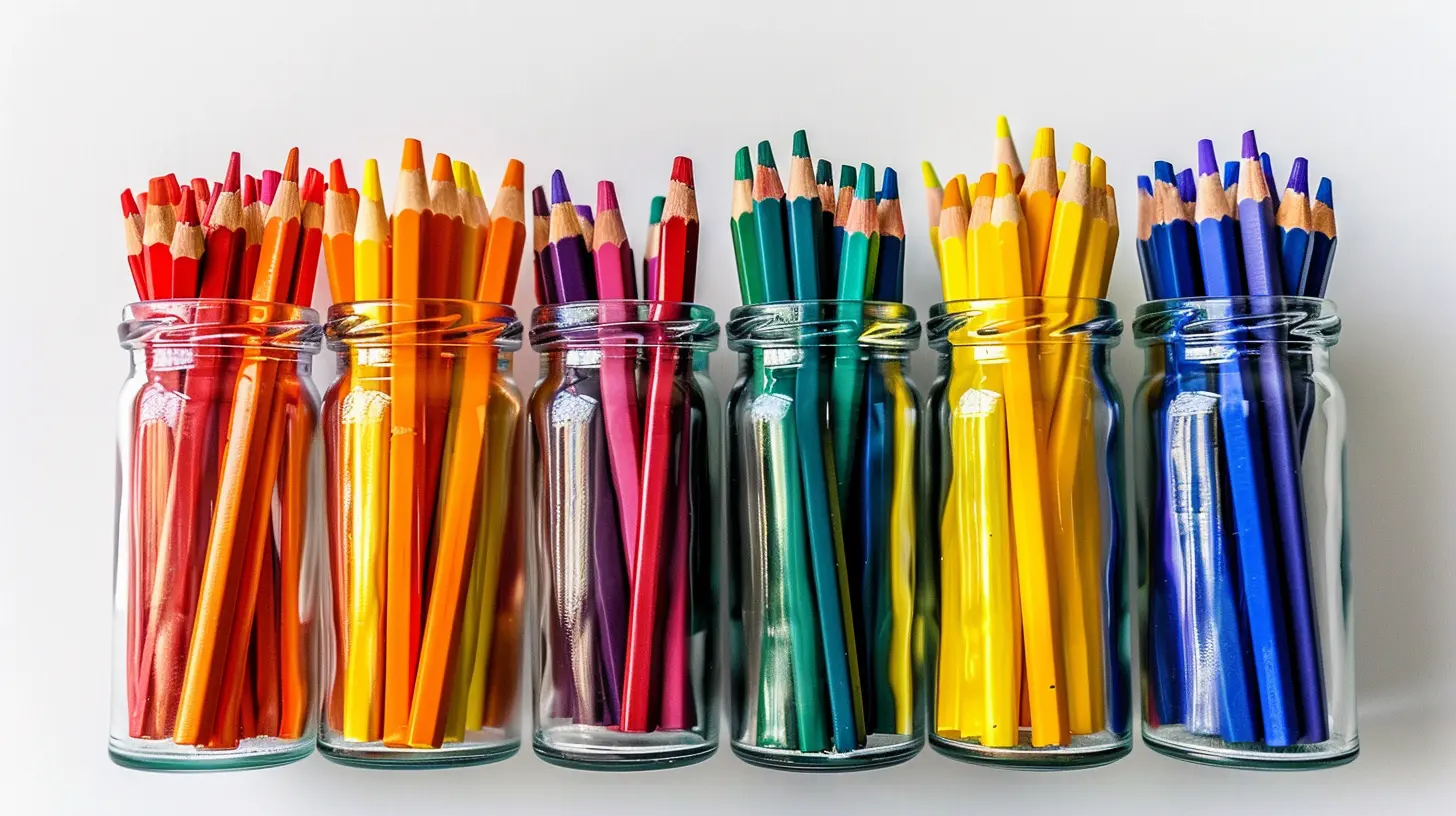How Fine Motor Skills Help Kids Succeed in School
22 October 2025
Have you ever watched a child struggle to tie their shoelaces, use scissors, or even hold a pencil? It might seem like a small thing—just part of growing up, right? But those tiny movements, those precise little actions that require control and coordination, are part of something much bigger. They’re called fine motor skills. And here's the kicker: fine motor skills play a massive role in how well kids do at school. Seriously!
Let’s dive into why this is more than just buttoning buttons and coloring between the lines. Whether you’re a parent, teacher, or just curious, understanding fine motor development could change the way you view your child’s educational journey.
What Are Fine Motor Skills, Anyway?
Let’s keep it simple. Fine motor skills are the small movements kids make with their hands and fingers. Think writing, picking things up, buttoning, tying shoelaces, using fork and spoon, and even turning the pages of a book. These tasks don’t just magically happen. They’re built over time with practice, patience, and lots of coordination between the brain and muscles.You can think of them as the body's behind-the-scenes crew—quietly making sure the main performance goes off without a hitch.
Why Fine Motor Skills Are Crucial in School
1. Writing – The Academic Superpower
Imagine trying to jot down a sentence if you can’t even grip a pencil properly. For a child, this is real. Writing is one of the most obvious examples where fine motor skills shine. From learning to hold a pencil to forming letters and writing out full sentences, it all depends on finger strength and hand-eye coordination.And here's a little secret: kids who struggle with fine motor skills often get labeled as "slow learners" simply because they can’t write fast enough to keep up. Frustrating, right? It's like having the words spun perfectly in your head but not being able to get them onto paper.
So when your child practices drawing or using play dough, that’s not just play—it’s training their muscles for the academic marathon.
2. Cutting, Gluing, and Crafting – More Than Just Fun
Ever wondered why preschool and early elementary classrooms are filled with scissors, glue sticks, and craft paper? These activities might look like playtime, but there’s real developmental magic happening here.Cutting with scissors teaches coordination. Gluing small bits of paper hones precision. Crafting in class gives kids the opportunity to learn spatial awareness, follow instructions, and complete tasks from start to finish.
Think of it this way: crafts are like obstacle courses for fingers. Each step trains kids to control their movements and think critically—both essential school skills.
3. Independent Tasks Build Confidence
Fine motor skills aren’t just academic—they’re empowering. Picture a child who can tie their shoes, zip up their coat, and pack their backpack. Now imagine another who needs help with all of that.Who’s going to walk into the classroom with more confidence?
Being able to manage personal tasks creates a sense of independence. Kids start feeling capable and self-assured, which naturally spills over into how they approach learning. They're not distracted by anxiety about needing constant help—they’re focused and ready to learn.
4. Technology Still Needs Fingers
Okay, so maybe you’re thinking: “But everything’s digital now. Do kids really need to write or cut paper anymore?” Fair point. But even tablets, keyboards, and touchscreens need fine motor skills. Swiping correctly, tapping with intent, even dragging and dropping icons—all require dexterity.Plus, plenty of research shows that writing things down by hand actually improves memory and learning. Even with tech growing in schools, those foundational hand skills definitely still matter.
Signs Your Child Might Be Struggling with Fine Motor Skills
So, how do you know if your child’s fine motor skills are right where they should be?Here are a few red flags to watch out for:
- Avoids coloring, drawing, or writing
- Has a weird grip on pencils or crayons
- Struggles with buttons, zippers, or tying shoes
- Gets frustrated during craft time
- Writes very slowly or with poor legibility
- Has difficulty using utensils during meals
If several of these sound familiar, your child might need a little extra fine motor fun in their day—not textbooks or drills, just more play with purpose.
The Direct Impact on Academic Performance
1. Better Focus and Less Frustration
When kids aren't constantly battling their hands to get the job done, they have more mental space to focus. Instead of being busy just figuring out how to hold a pencil, they’re focused on what to write.This mental energy shift is huge. It means fewer frustrations, more engagement, and a smoother ride through school tasks.
2. More Organized Work = Better Grades
Let’s face it: neat handwriting, clean diagrams, and structured notes often get better grades—especially in early education where teachers need to see kids' progress. If a child’s writing is illegible or their projects are sloppily glued together, it might not reflect their actual understanding. But it could impact their grade all the same.Strong fine motor skills help kids present their best self on paper. That alone can make a major difference.
3. Improved Reading and Math Skills
Surprise! Fine motor skills are even linked to reading and math. How?- Reading: Turning pages, pointing to words, and even the eye movement required for tracking sentences—these all rely on small muscle control.
- Math: Writing numbers, using rulers, drawing shapes, or using manipulatives (like blocks and counters) all require precise hand movements.
The brain-body connection is strong. When kids become masters of movement, their minds follow.
How to Help Your Child Develop Fine Motor Skills at Home
Here comes the fun part—what can parents actually do to help kids improve?1. Play with Purpose
You don’t need expensive gadgets or therapy appointments. Just simple, hands-on activities like:- Play dough – Squeeze, roll, pinch.
- Beads and string – Great for hand-eye coordination.
- Stickers – Peeling and sticking is surprisingly effective.
- Tearing paper – Strengthens fingers in fun ways.
- Building with blocks or Legos – Encourages precise finger use.
All of these build strength and control without your child even realizing they’re practicing.
2. Encourage Daily Independence
Let them try to button their shirts, zip their bags, use utensils, and do their daily routines. Yes, it takes more time. But that extra five minutes now saves frustration in the classroom later.3. Include Drawing and Coloring Time
It doesn’t have to be perfect. Scribbling is still beneficial. Coloring strengthens the wrist and helps kids learn how much pressure to apply—key for writing later on.4. Use Apps and Games Mindfully
If screen time is part of your routine, aim for apps that encourage precision rather than passive watching. Look for tracking games, drawing tools, and puzzles that involve tapping in exact spots.5. Create a “Fine Motor Box”
Fill a small tub with tools that build coordination. Try mixing in:- Tweezers and pom-poms
- Pipe cleaners and beads
- Clothes pins
- Hole punchers
- Mini puzzles
Pull it out during screen-free time. Trust me, kids will be way more into it than you’d expect.
When to Seek Professional Help
Sometimes, despite all your efforts, your child might still struggle. And that’s okay.Occupational therapists (OTs) are the go-to pros when it comes to fine motor delays. If your child is falling far behind peers, getting stressed out over daily tasks, or avoiding work due to physical discomfort, talking to a specialist is a smart next step.
Remember: early support can make all the difference in confidence and academic success.
The Bottom Line
Fine motor skills aren’t just about neat handwriting or cute crafts—they’re the hidden engine behind your child's success in school.From writing essays to solving math problems, these tiny muscles support some of the biggest academic milestones. And the best part? You can start building them at home today. No worksheets required. Just give those little hands some fun, focused play and watch your child grow in more ways than one.
Small hands. Big future.
all images in this post were generated using AI tools
Category:
School ReadinessAuthor:

Max Shaffer
Discussion
rate this article
1 comments
Sylas Wade
Fine motor skills: because if your kid can’t grasp a crayon, they might just be drawing their way to chaos!
October 23, 2025 at 4:27 AM

Max Shaffer
Haha, exactly! Fine motor skills are essential for confidence and creativity—essential tools for success in school and beyond!


